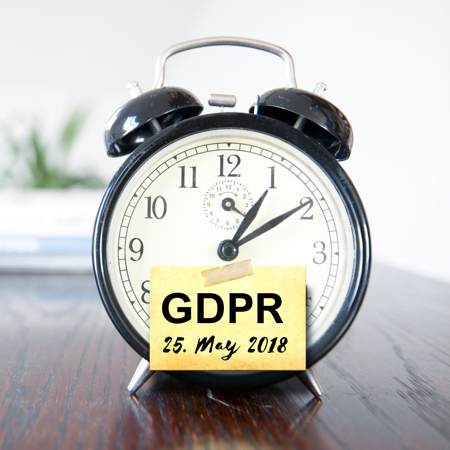Understanding the Tour Operators Margin Scheme
 The Tour Operators Margin Scheme (TOMS) is used to calculate how much VAT travel businesses in the UK need to pay on certain holiday sales. Like many other EU-wide regulations, the future of the scheme is uncertain after Brexit. Just last month, chief executive of the European Tourism association (Etoa), Tom Jenkins, spoke to the EU parliament’s committee on transport and tourism, calling for TOMS to continue after the UK leaves the EU. As we wait to see the outcome of Brexit negotiations and whether the status quo will be kept, now’s your chance to read up on who the Tour Operators Margin Scheme benefits and how it operates today.
The Tour Operators Margin Scheme (TOMS) is used to calculate how much VAT travel businesses in the UK need to pay on certain holiday sales. Like many other EU-wide regulations, the future of the scheme is uncertain after Brexit. Just last month, chief executive of the European Tourism association (Etoa), Tom Jenkins, spoke to the EU parliament’s committee on transport and tourism, calling for TOMS to continue after the UK leaves the EU. As we wait to see the outcome of Brexit negotiations and whether the status quo will be kept, now’s your chance to read up on who the Tour Operators Margin Scheme benefits and how it operates today.
What is the Tours Operators Margin Scheme?
The Tour Operators Margin Scheme was introduced to provide uniformity across the EU within the travel sector. It’s a compulsory VAT measure affecting suppliers who buy and resell travel services. So if an establishment in the UK buys travel services from any EU member state and sells them to individuals in the UK, the company needs to pay UK tax on the margin but does not need to register for VAT in the foreign country.
For example, when a London-based tour operator puts together a holiday package for UK residents to go to Ibiza, let’s say, the company buys accommodation from a Spanish resort, flights from a foreign airline provider, maybe even includes a car hire option purchased from a local provider. Although the business is selling services in Spain, which would normally require registering in Spain for VAT, under TOMs, the tour operator can charge VAT in the UK on the margin made (the difference between selling price and cost of the travel service). The example is for a package, but it also applies to the sale of a single service (i.e. just the hotel in Ibiza, for example).
Calculating TOMS VAT
TOMS requires an extensive year-end calculation. This can get complicated since it’s different than how you would go about calculating standard output VAT. What makes matters even trickier is that at the end of the year you’ll be dealing with sales made both within and outside of TOMS. The circumstances of your business may also cause variations in TOMS calculations, so it’s important to check what applies to you specifically. Moreover, TOMS is not applicable to wholesale sales and in a number of other cases, meaning that you’ll need to review each case carefully.
Calculate TOMS VAT with TaxAgility
Working with accountants for the travel industry ensures that tour operators get their TOMS calculation right the first time. As accountants for travel and leisure companies, TaxAgility can help SMEs wrap their head around their tax implications. Our specialist accountants are here to discuss how TOMs applies to your business and we can help you plan effectively for the future.
Find out more about why we are the perfect accountants for the travel and leisure sector by calling us today on 020 8108 0090.
Last minute GDPR preparation for small businesses
 GDPR is a hot topic these days and rightly so. 25 May 2018 is the day the new EU General Data Protection Regulation swings into full gear, and with it come hefty fines to those who are found non-compliant.
GDPR is a hot topic these days and rightly so. 25 May 2018 is the day the new EU General Data Protection Regulation swings into full gear, and with it come hefty fines to those who are found non-compliant.
We’re excited to be GDRP compliant ourselves, and as your small business accountants, we encourage you to take preparations seriously too. With just over two weeks to go, here’s your last-minute checklist to help your small business come to grips with the main points of GDPR compliance.
Your last-minute GDPR checklist
- I’ve conducted an information audit. – You’ll need to do this to identify how you process data within your organisation.
- I’ve mapped and documented my company’s data flows. – You’ve documented the results of your audit, wrote down what personal data you hold, how you got hold of it, who you share it with now and what you plan to do with it in the future. You should also implement an appropriate data protection policy that can demonstrate accountability under GDPR.
- I’ve identified my company’s lawful basis for processing data. – There are six: You can hold information if an individual has given clear consent, if the processing is necessary for a contract, necessary for a legal obligation, or to protect someone’s life. A basis can also be found if processing private information is necessary for you to perform a task in the public interest or legitimate interests. Make sure you clearly document your justification for relying on a lawful basis.
- I’ve reviewed how my company is asking for consent. – You’re asking for it in a transparent and prominent manner. Consent cannot be a precondition for your services, and you must keep records of an individual’s consent. Make sure to emphasise that consent can be withdrawn anytime. For processing the data of anyone under the age of 13, you need consent from a parent or guardian.
- I’ve provided privacy information on my website and in forms I send out. – The information must be short and clear, easy to understand and easy to access. If it’s targeting children, you must make sure it’s written in a way that’s understood by them.
- I know what to do when someone asks to see/change/delete/restrict access to their personal data. – They can ask for this verbally or in writing, and either way you’re obliged to comply with their requests free of charge within 30 days.
- I know that the data belongs to the people, not to my business. – If they ask for it and want to reuse it for their own purposes, they can.
- My business knows how to monitor and regularly review my compliance with data protection policies and data security.
- I’ve trained my staff on data protection.
- I’ve taken technical and organisational steps to make sure data is securely protected.
- I’ve nominated a Data Protection Officer (DPO). – Check with ICO if you’re required to have one and appoint a member of staff.
- I have data breach procedures in place, including a notification process. – If there’s been a data breach, you must notify the authorities within 72 hours of becoming aware of it.
TaxAgility, GDPR compliant accountants
Accountants are known to handle highly sensitive company information, and at TaxAgility, we work hard to ensure yours is kept secure. This means that you don’t need to worry about the privacy of your data while we continue to provide top-notch services to small businesses across London. From accounts and bookkeeping to payroll services, tax planning, tax investigations and more, contact us today to find out what London’s Local Accountants TaxAgility can do for your small business in: Putney, Wimbledon, Fulham, Richmond, Hammersmith and throughout London from our Central London office in Cavendish Square.
Buy-to-let: Essential tax advice for new landlords
 The glory days of the buy-to-let market are supposedly over, but according to UK Finance, new investors have taken out over five thousand buy-to-let mortgages in February 2018. If you’re considering doing the same, find out what the main BTL taxes are that you’ll deal with.
The glory days of the buy-to-let market are supposedly over, but according to UK Finance, new investors have taken out over five thousand buy-to-let mortgages in February 2018. If you’re considering doing the same, find out what the main BTL taxes are that you’ll deal with.
Purchasing your property
You can choose to buy a property either as an individual, as a joint owner or via a limited company. The tax implications will be different for each scenario, so you should speak to an accountant specialising in landlords to find out which option is the best for you and decide on a course of action appropriate to your situation.
There is a different Stamp Duty Land Tax (SDLT) system in place if you are buying a property that you do not plan to live in, but will choose to let out instead. There are six band rates, with only properties under £40,000 not attracting any SDLT. Anything over this is taxed between 3 to 15 percent.
Renting your property
You’ll need to register with HMRC and send them annual tax returns when renting out your property, otherwise you may face a fine. Tax rules vary for residential properties, furnished holiday lettings and commercial properties, and your tax bracket will determine how much tax you are required to pay. In every case, you’ll need to have a bookkeeping system in place to track your income and expenses.
You’ll have to pay income tax on rental profits, but there are certain expenses you can deduct from the rental income. There is a vast range of allowable expenditures including general maintenance and repair, letting agent fees, insurance, and direct costs of renting a property, which could include phone calls, stationery and advertising. Visit HMRC’s rental income tax guide for more information.
Mortgage interest tax relief
For those who own property as individuals and have taken out a buy-to-let mortgage, it’s important to know that the government has introduced a cut to mortgage interest tax relief. While before April 2017, mortgage interest payments were deductible from a landlord’s taxable income before they calculated their tax bill, buy-to-let investors will now have to pay tax on their full rental income and then claim back a basic tax deduction.
London’s local accountants saving landlords time, money and headaches
Whether you’re a portfolio landlord or letting your first property, managing your finances as a landlord can get complicated pretty fast. TaxAgility’s has experienced accountants to help keep your finances organised and help with landlord tax returns. We pride ourselves on being specialist accountants for landlords, aiming to help you make sense of the various tax implications that affect you. Our services give you access to a team of experts with specialist resources, providing you with a cost-effective solution to your accounting woes.
Call us today on 020 8108 0090 and find out how we operate local to landlords in London.
We’re Accountants serving clients in Putney, Wimbledon, Fulham, Richmond, Hammersmith and from our Central London office in Cavendish Square.

